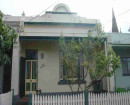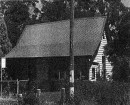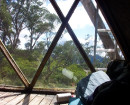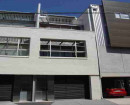EMERALD LAKE PARK & LANDSCAPE (PART NOBELIUS NURSERY)
Emerald Lake Road EMERALD, Cardinia Shire
-
Add to tour
You must log in to do that.
-
Share
-
Shortlist place
You must log in to do that.
- Download report
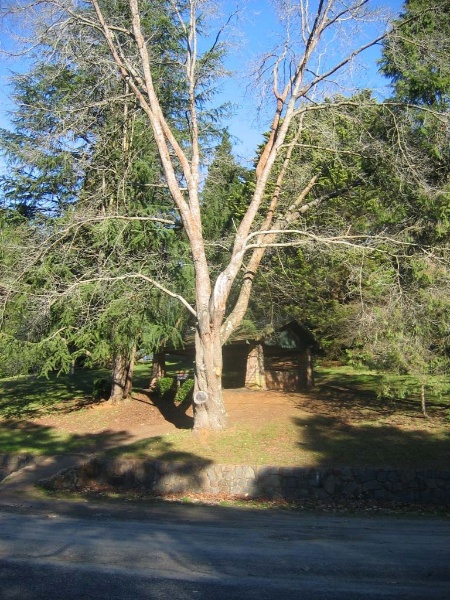

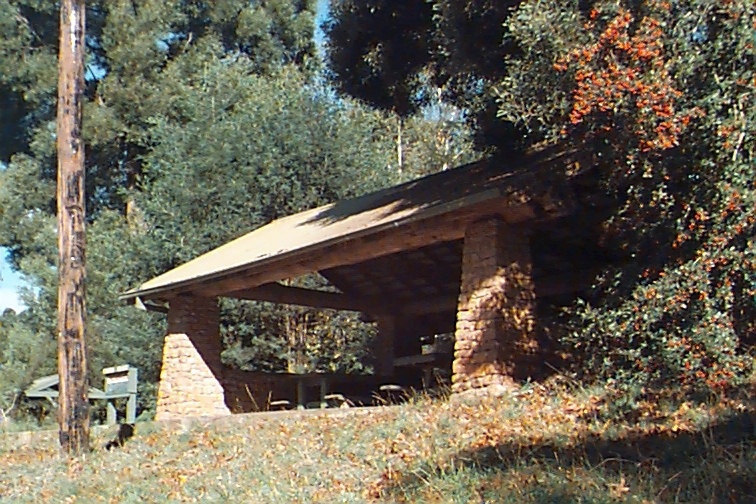
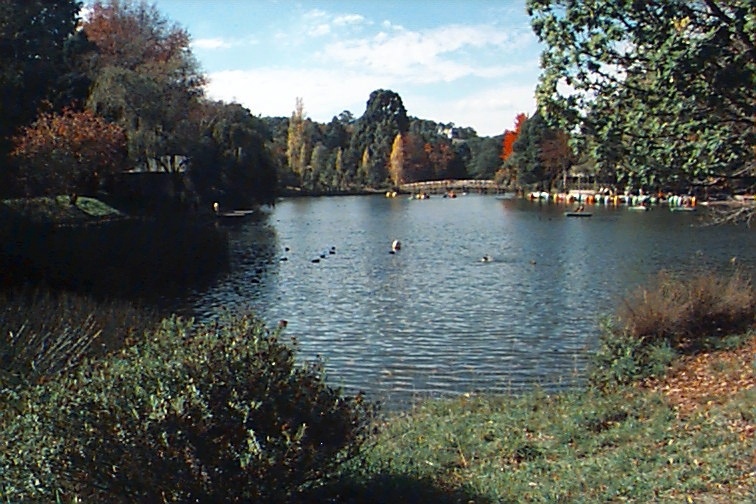
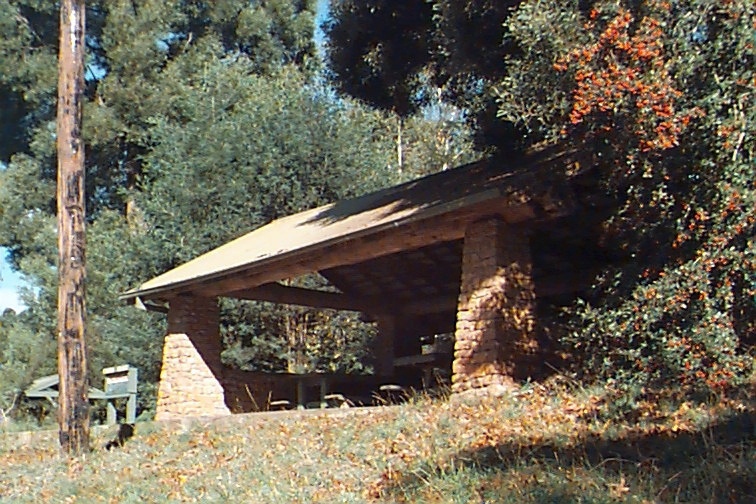
Statement of Significance
What is significant? The Emerald Lake Park cultural landscape, early twentieth century and 1940s-50s plantings, the picturesque lake, rustic rubble stone and log shelters, remnant evidence of earlier structures, for its historic association with CA Nobelius and continuing association with the CA Nobelius Gembrook Nursery. Emerald Lake Park is also significant as a group of related places, with a strong relationship with the former nursery's packing shed and siding, the Gembrook Narrow Gauge Railway Line and Lakeside Station.
How is it significant? Emerald Lake Park is of historic and aesthetic significance to the Melbourne metropolitan region and possibly the State.
Why is it significant? Emerald Lake Park is of significance to the Melbourne metropolitan region and possibly the State as an excellent example of ornamental public recreation area planting largely from the 1940s-50s, set in a native forest context and surrounding a picturesque lake, with associated rustic rubble stone and log shelters typical of this era and earlier (RNE Criteria A.4, B.1, F.1); for the rarity and uncommon formation of individual mainly conifer specimens within the park as well as the superior conifer grouping on the hillside overlooking the lake and lakeside car park (RNE B.2, F.1); for its historic association with CA Nobelius (RNE H.1), and continuing association with the CA Nobelius Gembrook Nursery, as the site of the nursery's display garden and later the flax field and processing works, and close to the Nobelius Heritage Park, the former nursery's packing shed and siding (RNE A.4); and for its strategic relationship with the Gembrook Narrow Gauge Railway Line and Lakeside Station (1944-), as both a tourist and goods link with Melbourne (RNE A.4). (Last Paragraph a direct quote by Context Pty Ltd 2007 from Graeme Butler & Associates 1998 Heritage Study)
-
-
EMERALD LAKE PARK & LANDSCAPE (PART NOBELIUS NURSERY) - Physical Description 1
Extensive ornamental mainly exotic planting on lawns from both the Nobelius Gembrook Nursery phase and the public park phase from the 1940s onwards, all within a context of native forest.
There are conifers, mature oaks, perimeter rows of Monterey pines, the central Lake Treganowen, early stone and timber picnic shelters (1940s-50s?) named Lakeside Shelter, Poolside Shelter, and Boatshed shelter; dry stone retaining walls, paths, and roads: these provide the core character of the early phase of the park.
The Lake Railway Station, built on the Gembrook light railway, overlooks the park and lake.
Trees from the National Trust of Australia (Vic) Register of Significant Trees include: Japanese cedar 'Cryptomeria japonica' at the lake edge near the lake-side carpark and a popular tourist photographic spot because of its unusual form, classified by National Trust of Australia and estimated to have been planted c1923; Colorado white fir 'Abies concolor' east of post office & by car park beyond lake, (several c.30m tall) recorded by the National Trust of Australia for rarity, estimated planted c1940; Weeping Himalayan cypress 'Cupressus himalaica', J.Silba sp.nova., classified for rarity, estimated planting c1930; Norway (or common) spruce 'Picea abies' in the conifer group above the car park, 25m tall, recorded, estimated planting c1910; Japanese umbrella pine 'Sciadopitys verticallata' recorded for its rarity, planted c1960.
Note: Some of the specimens have been noted by Spencer [R Spencer (1995) in 'Horticultural Flora of South-Eastern Australia' , volume 1, p181] discussing the unknown taxonomic status of Emerald Lake Park cypress, possibly 'Cupressus cashmeriana' or 'C. torulosa'. The Western Himalayan cypress is probably a Kashmir cypress ('Cupressus cashmertana'). Most of these major tree specimens (generally mature conifers) are grouped just above the lake-side carpark and on the hill overlooking the carpark as part of a greater group of conifers which are notable on a State or regional basis for their variety within the genus, the formation and the rarity of individual specimens. Many of these trees are shown as semi-mature in postcards of the park produced soon after WW2 (State Library of Victoria Pictures collection). A large oak located near the pump house close to the water slide, appears to date from prior to the 1940s-50s.
More recent additions include the foot bridge, Gus Ryberg, Carl Stemp & Bunurong amphitheatres and 1990 Earthday memorial wall, also treated pine fences, poles, water slide, staff accommodation, tea rooms, and kiosks, and landscaping works, including traffic islands and plantings within the car park. There is also Prices amphitheatre and nearby mature chestnut ('Aesculus sp'.), and 'Quercus' [Macedon].
Tourist walks extend from the lake to the south-west, including the Southern Firebreak and Wishing Well Creek tracks. The following is an extract of a guide written by the former park ranger (?) for these two walking tracks, accompanying a sketch map (note that botanical names may need revision). It provides some idea of the planting in the park and the value given to some of the elements by local people.
"FIREBREAK TRACK (Numbered pegs) PEG I. On the left trees are Green Japanese Cedar, Spruce, Larch and Huon Pine. On the right is Wishing Well Creek .From (1) proceed 100 paces to (2). Trees on the left are Laburnum Norway Maple, Variegated Thuya and Larch (deciduous conifer).
Carry on 85 paces to (5). At (5) on the right is a single row of trees including Oriental Planes, an English Oak, and one Linden Tree if unter den Linden (a famous avenue in Germany). As you left uphill to Peg (4) on the right are 5 rows of Chestnuts. These trees produce edible nuts, usually maturing during the months of April to May. From (3) to (4) - a distance of 100 paces - you turn right and on your left is a naturally regenerated stand of Radiata Pine used for timber, furniture, paper pulp, and chipboard. During the 80 paces travelled to (5) on the right are stands of Chestnut and English Elm. On the left are Blackwoods and Heather Scrub. Having arrived at (5) proceed 50 paces to (6) during which time you will have passed English Laurel and Veronica Hedge plants on the right and on the left Native Olive and Blackwoods. You now have 120 paces to reach (7), and on the way stands of English Elm on the right and on the left are many natives, including Dogwood, Native Ash, Musk Shrub, and Blackwoods, Native Olive, Pittosporum, Tree Ferns, Apple Berry and Clematis climbers.
The dead trees in this wilderness area are mostly Black Wattles which have reached their allotted life span which rarely exceeds 30 years. Early morning and late evening, this area is the scene and sound of indigenous animal and bird life. Having reached (7) which is identified by a King Fern framed in a mass of Vulgaris Privet Hedge, you now turn left uphill some 90 paces to (8) which is at a Japanese Bamboo Plant (Lycesteria). Both left and right for 150 paces to (9) on either side of the track are Cork Elms (a propagation stock for Weeping, Golden and Variegated Elm). Also there is a clump of Cherry Plum stock. At (9) on the right are stands of English Oak and also more English Elm. On the left are Silver Poplar and white Robinia. Proceed 80 paces to (IO) - Turn left and now you are on the South Fire break Track boundary of the Park and the Puffing Billy line.
Proceed 260 paces to (1 1)and from here 130 paces to (12). You will have passed clumps of Hill Ti-tree, Sword Grass and Black Wattle. From (12) to (13) is a distances of 160 paces, you will pass on the left stands of naturally regenerated Radiata Pine. Continue to (14) 150 paces turning left from the main track through Radiata Pine and Black Wattle and Victorian Christmas Bush.
Continue for another 100 paces to point (15) on the edge of open plantation from where the Car Park can be seen.
WISHING WELL TRACK (D) starts from the bottom of the 5 rows of Chestnut Trees, turning left through Sycamores on either side for 185 paces to (E). Here turn right over spring-fed creek containing Tree Ferns as well as Fishbone and King Ferns along its banks. From the bridge ,some 90 paces to (F) at which vicinity you will note Victorian Christmas Bush, Native Olive, Common Bracken Fern, and Musk Shrub. The tall trees, both dead and alive, are BLACK WATTLE whose life span rarely exceeds 30 years. Proceed 60 paces to (G), turn left and on .your left are Norway Maples and English Ash, On the right is the fern lined Wishing Well Creek with two specimens of Blackwoods which when milled produce much sought after furniture timber. Another 90 paces to (H) and you are confronted on the left by English Laurel and Chestnut Trees and Huon Pine. On your right is a tall Hybrid Gum. 150 paces to (I) and on the way on your left you pass many specimens of Elm, Silver Poplar, Chestnut and Common Beech Trees. Arriving at (I) you gaze at some of the finest specimens of Tulip Trees in the State. These and the Common Beech backing on to them are much prized as veneer and furniture timber in Europe.
On to (J) some 145 paces away, sited at the Wishing Well and prior to arriving, the trees you have passed are Cordyline Palms, Japonica Camellia and Rhodo Ponticum often planted along English lanes. Uphill from (J) you cross a bridge and on the left of the bridge is the spring-fed source of Wishing Well Creek. Proceed to (K) some 65 paces and on the left a Giant Plane Tree is found, together with a large Blackwood and more Cordyline Palms. Keeping the creek on your right, travel 185 paces to (L). Continue downhill (beware this area is very slippery) At 30 paces on the left is a giant Evergreen Oak (Hodjinsii) and a further 60 paces on the right are 3 Black Walnut trees (used for timber) and close by a number of Hydrangeas.
Continuing to (M) you will pass on your left a giant Holly Tree, rows of Monilifera, Poplar, Chestnut and extensive areas of King Fem. From (L) to (M) you covered 185 paces. Proceed 47 paces to a large specimen of Parrys Giant Chestnut on the right. This Chestnut produces the largest nut of this species. This is at peg (N) and from here 184 paces to (0) which is identified by a Medlar Tree (one of the Quince family). Another 60 paces and you are at (P) identified by two Holly Trees backed by an avenue of Coccinnea Scarlet Oaks. Another 110 paces takes you across the stream on the right and almost at Peg (B). All that remains to be said is that had you travelled this No.2 Track in the early morning or late evening you would have enjoyed the bonus of seeing and hearing the abundant bird and native animal life of this wilderness area which so effectively protects them.
The above walking track pegs or markers have been largely destroyed although the specimens are generally still evident.(Context Pty Ltd 2007 direct quote from Graeme Butler & Associates 1998 Heritage Study)
EMERALD LAKE PARK & LANDSCAPE (PART NOBELIUS NURSERY) - Physical Conditions
Good (Context Pty Ltd 2007)
The park and its trees have been generally well maintained, with only the rubble stone toilet block on the west side of the lake in fair repair. Elements from the 1960s such as the water slide represent an important phase in the park's development but are visually contrasting and unrelated to the distinctive 1940s (and earlier) character of the planting and rubble stone shelters from the park's foundation period.
Forest areas in the south of the park, adjoining the Nobelius Heritage Park, contain mature exotic and native specimens, many of which need attention to improve their health.
The park urgently needs a conservation management plan to establish the specimens and elements to be retained and a course of action to achieve this. (Graeme Butler & Associates 1998)EMERALD LAKE PARK & LANDSCAPE (PART NOBELIUS NURSERY) - Integrity
Evidence of Stages (Context Pty Ltd 2007)
EMERALD LAKE PARK & LANDSCAPE (PART NOBELIUS NURSERY) - Physical Description 2
Key elements - Landscape & Tree(s) (Context Pty Ltd 2007)
EMERALD LAKE PARK & LANDSCAPE (PART NOBELIUS NURSERY) - Historical Australian Themes
National Themes
3.12 Feeding people
3.23 Catering for tourists
3.8 Moving goods and people
8.1 Organising recreation
(Context Pty Ltd 2007)
--------------------------------------------------------
Principal Australian Historical Themes - Engaging in primary production
Historical Subthemes - Other primary industry (orchards, nurseries, market gardens)
(Graeme Butler & Associates 1998)
EMERALD LAKE PARK & LANDSCAPE (PART NOBELIUS NURSERY) - Physical Description 3
Associations - Nobelius, CA; Nobelius, AV; Shire of Ferntree Gully; Knorr, John
(Graeme Butler & Associates 1998)
Heritage Study and Grading
Cardinia - Cardinia Local Heritage Study Review
Author: Context P/L
Year: 2007
Grading:Cardinia - Cardinia Shire Heritage Study 1998
Author: Graeme Butler & Associates
Year: 1998
Grading:
-
-
-
-
-
FORMER NOBELIUS NURSERY, PACKING SHED AND RAILWAY SIDING
 Victorian Heritage Register H2285
Victorian Heritage Register H2285 -
SITE OF THE FORMER EMERALD HALL/MECHANICS INSTITUTE
 Victorian Heritage Inventory
Victorian Heritage Inventory -
LAWSON FALSE CYPRESS AT VERLYS
 Cardinia Shire
Cardinia Shire
-
'NORWAY'
 Boroondara City
Boroondara City -
1 Mitchell Street
 Yarra City
Yarra City
-
-







